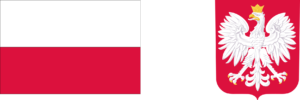Serbia once again witnessed violent clashes between opponents and supporters of the government. According to wire service reports, at least several dozen people were injured, including police officers, and many were detained. The latest outbreak of violence is part of a protest movement that has lasted for more than nine months, driven largely by students demanding early elections and accountability for abuses of power.
Associated Press reported that the clashes began when anti-government demonstrators came face-to-face with pro-government counter-protesters. Riot police intervened to separate the two sides, deploying crowd control units across the capital and beyond. Initial reports counted numerous injured officers, with figures still being updated as the situation developed.
The roots of the unrest date back to November 2024, following the collapse of a roof at the Novi Sad train station that killed 16 people. Accusations of corruption and negligence in infrastructure projects quickly evolved into a broader protest movement, with students taking a leading role. Demonstrators have consistently demanded early elections and the resignation of officials responsible for violent crackdowns. The government has refused these demands, while the pro-presidential camp began organizing counter-rallies, raising the likelihood of direct street confrontations.
The tension reached a high point on June 29, 2025, when Belgrade saw one of its largest demonstrations in recent years. Independent estimates put attendance at around 140,000, while police claimed 36,000. That night, hours-long clashes broke out between protesters and riot police. The following day brought road and bridge blockades across the capital and other cities. Opposition leaders and student organizers accused the authorities of using pepper spray and excessive force, while government officials dismissed some participants as “hooligans.”
Arrests have been widespread. Reuters reported that 79 people were detained nationwide after the July protests, while other sources referred simply to “dozens” without specific figures. Earlier demonstrations saw at least six police officers injured, while the August 13 clashes produced higher numbers, according to the latest AP bulletins. Discrepancies in attendance counts are consistent: independent observers report hundreds of thousands, police tens of thousands.
The government of President Aleksandar Vučić continues to reject calls for early elections, attributing the escalation to “radicals” and foreign influence. Opposition parties, academic groups, and human rights organizations cite violations of civil rights and the use of excessive force by police, as well as pressure on media and institutions. Reuters documented incidents of violence against students removed from a blockade at the University of Belgrade’s Faculty of Law, and the UN Human Rights Office has monitored reports of arbitrary arrests, urging restraint.
While Belgrade remains the symbolic heart of the protest movement, demonstrations and clashes have also been reported in Novi Sad, Niš, and Novi Pazar. This nationwide spread signals that the unrest is no longer confined to the capital.
In the short term, the trajectory of events will depend on three factors: whether the authorities choose de-escalation and dialogue or further hardline measures; whether the protest movement—rooted in student activism—can maintain unity across political and social groups; and whether tactics such as blockades and counter-rallies escalate or diminish. Past patterns suggest that large waves of arrests often serve as a trigger for renewed mobilization and further disruptions.
Early numbers on casualties, arrests, and crowd sizes are likely to change as more information emerges. Cross-checking between major wire services such as AP and Reuters, alongside outlets like ABC News, Politico, Euronews, and local Serbian and regional media, helps filter out noise and identify consistent elements: the protests’ long duration, their student-led core, the political dispute over elections, the escalation into street violence, and the growing role of counter-demonstrations as a flashpoint.
After more than nine months, Serbia’s protest movement shows no sign of disappearing, and the August 13 riots may prove to be another turning point—either toward intensified confrontation or, if political will emerges, the start of meaningful dialogue.






